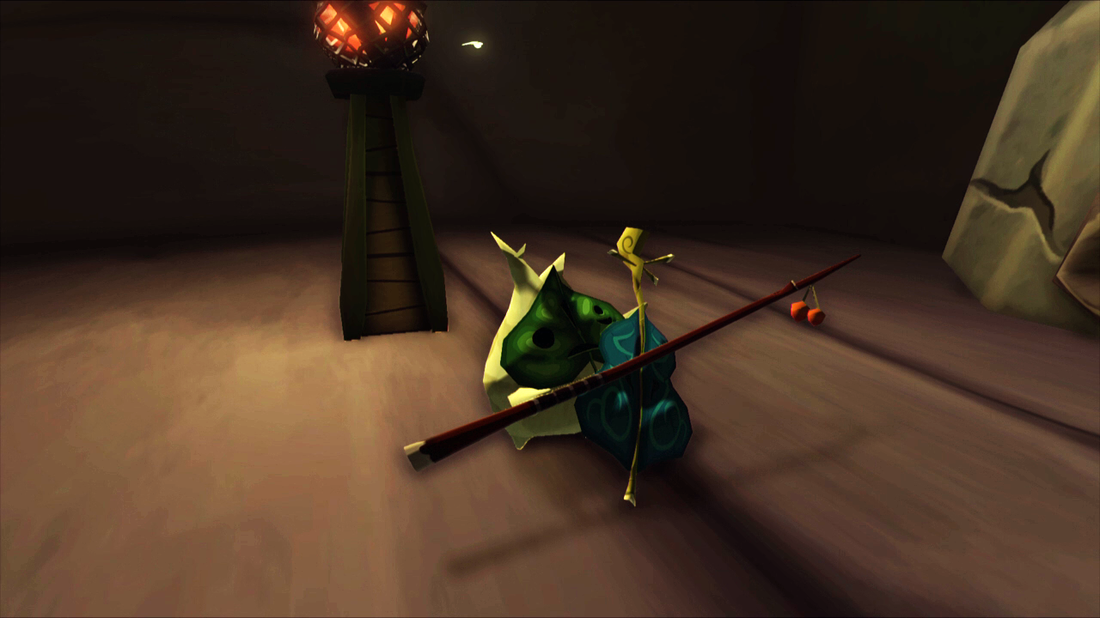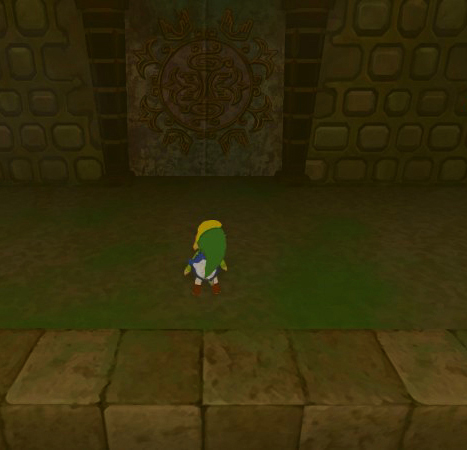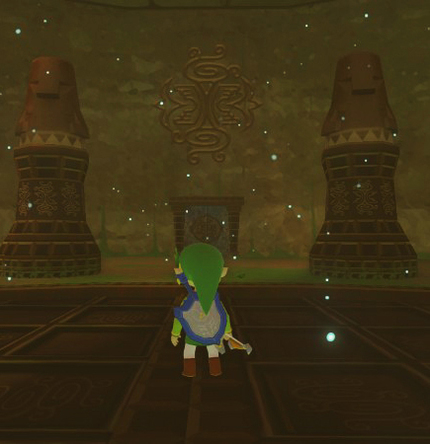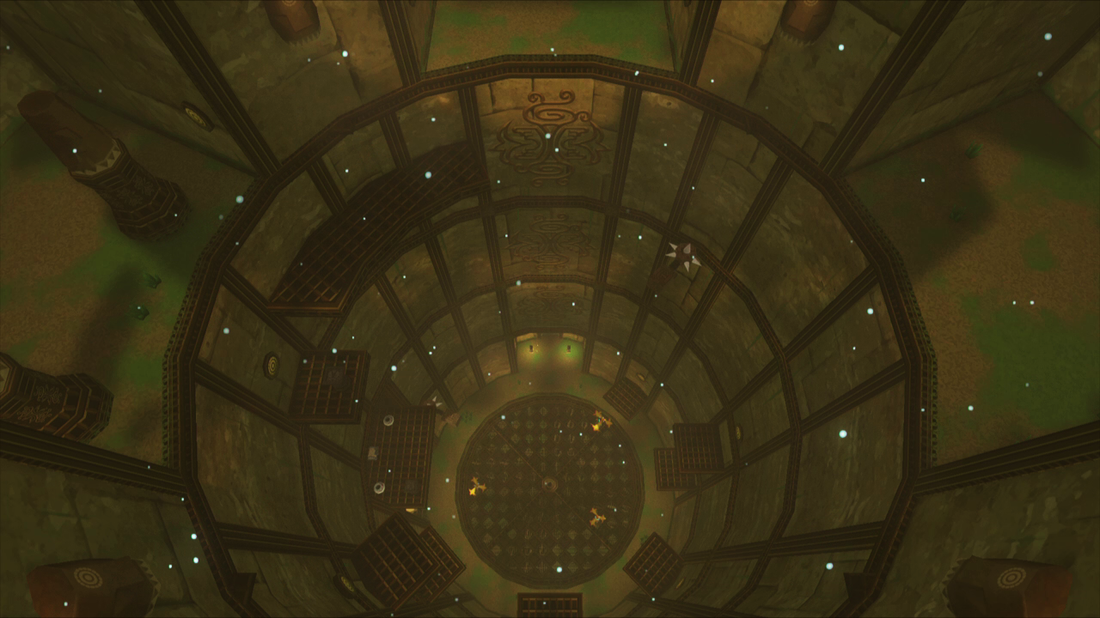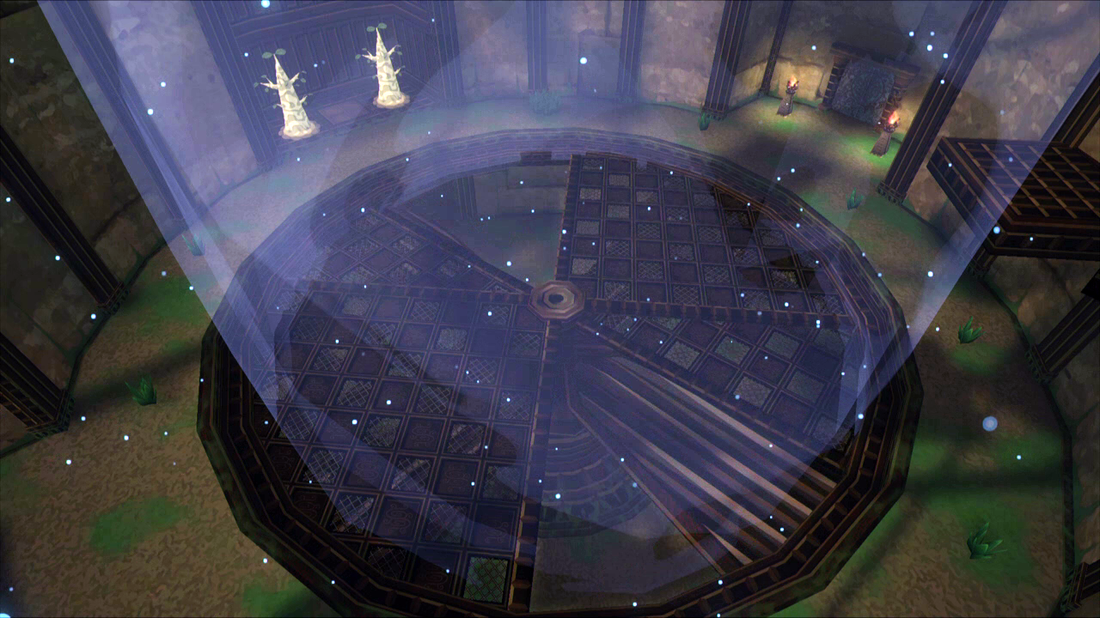The Wind Temple
“The memory of the kingdom vanished, but its legend survived on the wind’s breath.”
— Prologue, The Wind Waker
— Prologue, The Wind Waker
Aria to the Wind God
Many temples within this series are actually amalgamations of different elements, and the Wind Temple follows this scheme, fusing both wind and forest into one. This place is as the wind blowing over the grasses and through the trees, and its atmosphere evokes that of a sunlit and enchanted wood. The lazily-floating particles here are a direct parallel to those from Ocarina of Time’s Lost Woods and Sacred Forest Meadow; they give this area the feeling of it having been bewitched, or that some strange thing is preserving the life of the dungeon, though it be buried beneath the sea. Unlike the Earth Temple, whose linearity shows the obvious signs of human design, the Wind Temple is far more natural, with its curved walls, dirt and grass floors, and the flora that has made its home in every conceivable nook and cranny of this sanctuary. Suggestive of several different iconic woodlands, especially the enchanting Faron Woods of Twilight Princess, this area seeks to draw links to the past, as well as introduce new aspects of forests that were overlooked in previous games. Each forest, and indeed each individual tree, holds a particular splendor unique to it, and though each wooded area is familiarly bound by leaves, roots, and twigs, each one remains distinct and memorable.
|
A distinguished checkered pattern (as in a certain room of the Forest Temple from Ocarina of Time) graces large portions of the floor, while the walls seem almost like bricks placed in too much mortar. Yet, much of the floor is natural, and above we can see that some moss or lichen is present on many of these surfaces.
|
The statues previously seen in the Earth Temple, being squat creatures wearing a helm with a large nose-piece, feature prominently in this picture, as well as the central motif of this dungeon — a graceful series of lines depicting rushing winds, vines, and the wings of birds.
|
An enormous cylindrical shaft forms the nucleus of this temple, from which the smaller tributaries of rooms and hallways flow outward and eventually rejoin this central chamber. The seated elephantine statues of the Earth Temple are also visible on the left side, created almost in the likeness of the Moai upon Rapa Nui (Easter Island); they can also be seen on the foremost walls of the room, bearing a hookshot target upon each statue's head.
Although the atmosphere of a forgotten ruin pervades the experience of this place, its architecture and puzzles fail to match the mystery of its environment. Most impressive in this temple is the sheer amount of metalwork, which takes root upon the pilasters of the building as well as making up the majority material in the construction of the floors, fans, columns, springs, and screens. This is also the most inexplicable part. In a dungeon designated to house and worship the natural phenomena of wind and growing things, why did the architects decide to showcase devices so emblematic of industry? Huge metal fans and numerous windmills can be found in the central shaft; and while these two constructs direct the flow of, and harness, the wind, they are hardly to be thought of as natural. The paradoxical placement of these machines is the most unique aspect of this location, and what message they seek to deliver remains as unknown as those who created them.

